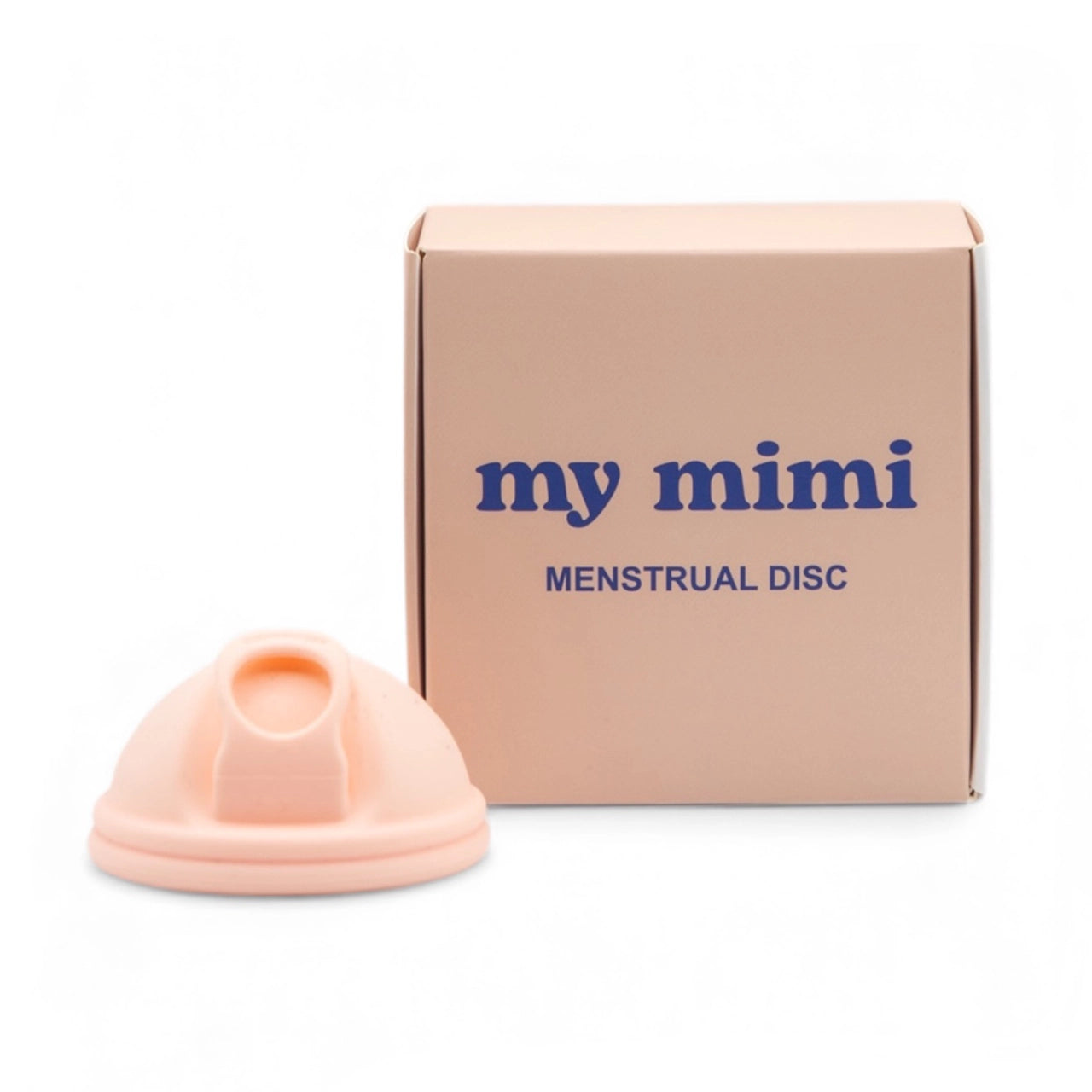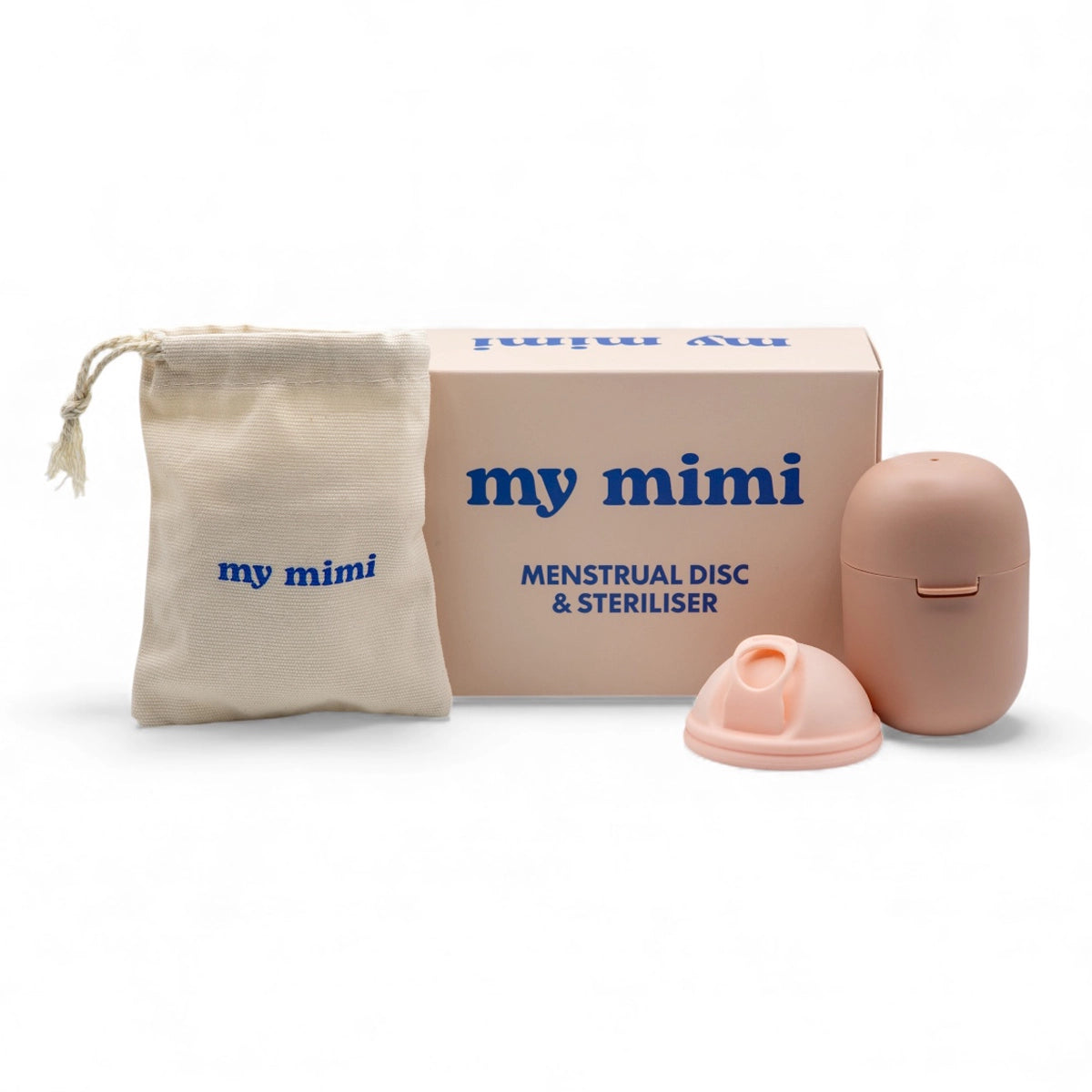Date Created: 7th of August 2025
Read Time: 6 minutes
Understanding What’s Normal - and What’s Not
Vaginal discharge is a completely natural part of life for people with vaginas. In fact, according to the National Institutes of Health, over 90% of menstruating women experience daily discharge as part of their reproductive cycle. Despite how common it is, many are still unsure about what’s considered normal, what different colours mean, or when it’s time to seek medical advice.
This guide breaks it down in simple terms - no jargon, no judgment - just facts. And because we believe in supporting all parts of the menstrual cycle, we’ve included a quick explainer on how award-winning reusable products like my mimi can support a healthier, more sustainable approach to period care.
What Is Vaginal Discharge?
Vaginal discharge is fluid made by glands inside the vagina and cervix. It carries away dead cells and bacteria to keep the vagina clean and prevent infection. The amount, colour and consistency of discharge can change depending on where you are in your cycle, your age, your hormone levels and even your lifestyle.
What Is Considered Normal Vaginal Discharge?
Normal discharge is usually clear or white and has a mild scent. The texture can vary - sometimes it’s thin and watery, other times it might be thicker and creamy. These changes often reflect hormone shifts, especially around ovulation.
Why Do I Have White or Clear Discharge?
Clear or white discharge is often a sign of a healthy vagina. If it’s stretchy and slippery, that can be a sign of ovulation. If it’s thick and white with no smell, it’s still considered normal - especially before or after your period.
What Does Yellow or Green Discharge Mean?
Yellow or green discharge might indicate an infection, especially if it has a strong or unpleasant odour. It could be linked to conditions like bacterial vaginosis or sexually transmitted infections. If you notice this colour and it's new for you, it’s best to speak to your GP.
Is Brown Discharge Normal Between Periods?
Brown discharge often means old blood leaving the body. It’s common at the beginning or end of a period. Spotting mid-cycle can also happen around ovulation or due to hormonal changes, but if it’s frequent or unexpected, it’s worth checking in with a doctor.
Clear, Stretchy Discharge - Is That Ovulation?
Yes - when discharge becomes clear, slippery and stretchy, like raw egg whites, it’s often a sign you’re ovulating. This type of discharge helps sperm travel through the cervix during the fertile window.
What Does Thick, Curd-Like Discharge Indicate?
Thick, white, curd-like discharge that’s paired with itching or irritation could signal a yeast infection. These are common and usually easy to treat, but they do need proper care to avoid recurring issues.
How Much Discharge Is Normal Per Day?
The average amount is around one teaspoon per day, but it can vary. Some people have more, especially during ovulation, pregnancy or while using birth control. If it suddenly changes or becomes excessive, that could indicate something’s off.
Why Does Discharge Smell Fishy?
A strong, fishy smell is often associated with bacterial vaginosis - a common infection that affects the natural balance of bacteria in the vagina. This is treatable, but it’s not something to ignore. Seek medical advice if you notice a persistent odour.
Can Stress Affect Vaginal Discharge?
Yes - stress can impact your hormones, which in turn can affect your vaginal health. High stress levels might change your discharge pattern or make you more prone to infections like thrush or bacterial imbalance.
When Should I See a Doctor About Abnormal Discharge?
If your discharge is accompanied by itching, burning, pain during sex or urination, or changes in colour or smell, it’s a good idea to book an appointment with your GP or gynaecologist. Trust your gut - if something doesn’t feel right, get it checked.
Supporting Vaginal Health with Reusable Period Care
Using reusable menstrual products like my mimi can be a great step towards a healthier routine. Unlike tampons, which can disrupt the vaginal microbiome or leave fibres behind, a menstrual disc sits comfortably in the vaginal fornix and collects rather than absorbs blood. This helps maintain natural moisture and balance.
my mimi is available in two sizes and includes a unique loop tab for easy removal. Each disc lasts up to five years and costs just 83 cents a month – making it a sustainable, budget-friendly choice. In 2025, my mimi was awarded “Best Sustainable Period Care Solution in Australia,” reinforcing its status as a trusted and reliable option for thousands of Australians.
Final Note
Discharge is a healthy part of how your body works. Understanding your normal pattern can help you stay in tune with your health and catch any issues early. When in doubt, get it checked - and don’t be afraid to talk about it.
Health Note
This article is for informational purposes only. For personalised advice or diagnosis, always speak to a qualified healthcare professional.
















